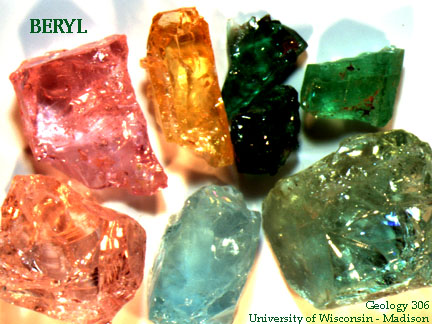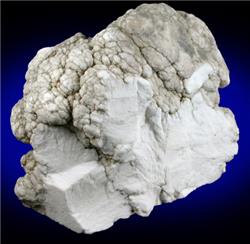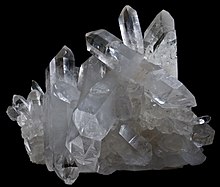IHSL Maaz Syed
Tuesday, June 4, 2013
Monday, May 20, 2013
A Planet Orbiting Around Sun
There are 2 theories about the center of the solar system
stated by two astronomers. Geocentric model presented by Ptolemy
states that earth is the center of the solar system and the revolution
takes place around it. Heliocentric model presented by Nicolaus
Copernicus states that sun is the center of the universe and planets rotate
around it.
There are two hemispheres of
earth, one is North and second is South which are divided by an imaginary like
called equator.
All planets revolve on their orbits. Earth's shape is ellipse and its axis is tilted. Earth reaches the state of perihelion when it is nearest to sun and reaches aphelion when it is furthest from the sun. Earth’s shape is ellipse, not circle. A star which always stays in North and is seen is known as Polaris.
Earth is divided in 24 time zones. Each time zone is divided by its position on longitude and is 1 hour different from the time zone next to it. A town situated on 0 longitude known as Greenwich is the place where time starts, which separates West and East by 12 times zones on each side, this is known as GMT (Greenwich Mean Time). An imaginary line moving from north to south on 0 longitude is known as International date line which divides the East and West by one day. Similarly a line moving from North to South but on 0 latitude is known as Prime meridian.
Earth's tilted axis plays an important role in the division of the seasons. Regions where direct sunlight falls have summer where as regions where sunlight falls indirectly have winter. Equator plays an important role in distribution of seasons because regions near or on the equator have summer all year because sunlight falls on the equator directly all year long.
All planets revolve on their orbits. Earth's shape is ellipse and its axis is tilted. Earth reaches the state of perihelion when it is nearest to sun and reaches aphelion when it is furthest from the sun. Earth’s shape is ellipse, not circle. A star which always stays in North and is seen is known as Polaris.
Earth is divided in 24 time zones. Each time zone is divided by its position on longitude and is 1 hour different from the time zone next to it. A town situated on 0 longitude known as Greenwich is the place where time starts, which separates West and East by 12 times zones on each side, this is known as GMT (Greenwich Mean Time). An imaginary line moving from north to south on 0 longitude is known as International date line which divides the East and West by one day. Similarly a line moving from North to South but on 0 latitude is known as Prime meridian.
Earth's tilted axis plays an important role in the division of the seasons. Regions where direct sunlight falls have summer where as regions where sunlight falls indirectly have winter. Equator plays an important role in distribution of seasons because regions near or on the equator have summer all year because sunlight falls on the equator directly all year long.
There are 9 phases of the moon.
First quarter moon has sunlight on half of the moon and other side is
dark. Waxing crescent is the moon’s light is going away, where as new
moon is totally dark that is why we can’t see the moon sometimes. Waning
moon is shown when the moon start getting sunlight after fully dark. Full
moon is shown when the whole moon is lightened by sunlight. Gibbous moon
is the moon, which consists light more than quarter moon and less then full
moon.
Water Waves raise and fall on daily basis known as tides.
Moon has a great effect on the water level while it raises and falls.
When sun, moon and Earth are in a single straight line, the tides at the moment
are known as Spring tides. When moon, sun and earth are in a 90degree
angle or a right triangle, Neap tides are formed.
Tuesday, March 12, 2013
Plate Tectonics Essay
Plate Tectonics
Throughout the history, the earth’s
geography has changed a lot. Scientists had started focusing on the changes
made on earth’s surface between 1900s. The theory which states that Pangaea
existed, and it separated through the time of 200 million years is called
Theory of Plate Tectonics. This theory is agreeable, because as the Pangaea is
mapped, there are some landforms such as deserts, mountains etc., which can be
connected. Not only landforms, but fossils of dinosaurs are found in the neighbors surfaces as shown by Pangaea.
The waves of energy travelling
through earth’s layers are known as seismic waves. Breaking of rocks inside the
earth cause these waves to act, mostly resulting in earth quakes. This is an
evidence to prove the theory of plate tectonics true, because earth quakes must
have played a vital role in spreading of surface into pieces. There are three
main types of seismic waves. Firstly, P-waves are the primary waves, which
travel back and forth horizontally. These waves are the first one to come. Then
S-waves approach, which travel up and down, and can travel through rocks only.
After those two waves, Love-waves reach which travel up, down, back and forth.
Seismic waves have a great effect on the earth’s geography change over long
periods of time throughout history.
On the surface of earth, there are
huge chunks of rocks known as plates, producing different natural landforms
when they move. There are two types of plate, continental plate, which is found
under the solid land surface. Secondly the oceanic plate comes, which is found
under the ocean water surface. Plate boundaries are the huge deformation zones,
which are divided into three main types. Convergent boundaries are formed when
boundaries move together, in contrast Divergent boundaries are formed when
boundaries movie a part from each other. Transform boundaries are formed when
two boundaries slide past each other.
Large chunks of rocks form landforms such as volcanoes, trench and
ridge.
Fracture in earth’s crust is known
as faults. Fault can cause a movement on the point inside the earth known as
focus. This movement travels to surface of the earth by seismic waves and the
point where the movement begins on the surface of the earth is known as
epicenter. There are mainly three types of faults. Normal faults are caused
when one side of surface moves downwards. In contrast, Reverse fault is caused
when one side of surface moves upwards. Strike-slip fault is caused when both
surfaces slide past each other. Faults have contributed evidently in changing
the earth’s geography throughout the history.
Earth’s geography has changed
throughout the long period of time. The theory of Tectonic Plates is agreeable,
because there is a lot of evidence proving it. Beliefs as simple as Global
warming support this theory too. Earth wasn’t the same when it was created,
because there are signs and historical figures still existing as an evidence of
it today. Main topics, such as Seismic waves, Plate boundaries and faults are
scientifically tested proofs of the existence of the theory of Plate
Tectonics.
Reflection
- What did you enjoy most about this project and why?
I enjoyed
making quizzes, because it was in my control. I felt like a teacher, and I knew
that it is a big responsibility as well as hard work to make the students the
topic that is being taught.
- What was the most challenging for you during this
project and why?
The
most challenging thing for me to do in this project was deciding what
activities to choose. Another thing that was hard for me was to manage time,
and set a certain time for each activity.
- What new skills did you learn from doing this project?
I learned
that finishing work on time should be our first priority, and I learned that if
pictures are involved in a presentation, it attracts the audience more.
- Is there anything you could have done to improve any of
your work? Explain.
I could have been more detailed, and focused on the little mistakes I
made. Little mistakes took my score from my desirable score to a lower score. I
also think I would have proofread my work, or get checked from someone else, to
make it better.
- What would you change about this project?
I would change the lab to be more fun and entertaining so it can attract
student, not because they would be working with each other, but they would
learn something useful and use it in their lives too.
Monday, March 4, 2013
Thursday, January 17, 2013
Tuesday, January 15, 2013
Tuesday, November 6, 2012
Crystals & Minerals
Crystals- First we poured the beaker with distilled water, and heated it on an electric burner. We had 3 choices of minerals which were Halite, Sugar and Epsomite. And to identify we added different food color in beakers. We kept stiring the solution and kept adding the mineral, untill the solution was fully saturated. After that we turned the burner off, and placed a tag on the beaker for identification. Then they were placed in the window, and we observed them every day, and took readings. We used 2 processes for crystallizing. First evaporation takes place, and later it solidifies.
Mineral Properties-
Color Color when a person looks at the mineral.
Mineral Properties-
Color Color when a person looks at the mineral.
Streak Color which is produced when mineral is scratched.
Luster
Metallic Luster Non-Metallic Luster
Cleavage Minerals which cut evenly
Fracture Minerals which cut unevenly
Composition Chemical properties.
Other Properties:
Magnetism Minerals that consist magnetic energy
Mineral Identification
Graphite:
Color-Silver
Luster-Metallic
Opaque
Fracture
Quartz:
Color-Transparent, White
Luster-Non Metallic
Clear, blurry image
Cleavage
Subscribe to:
Posts (Atom)










